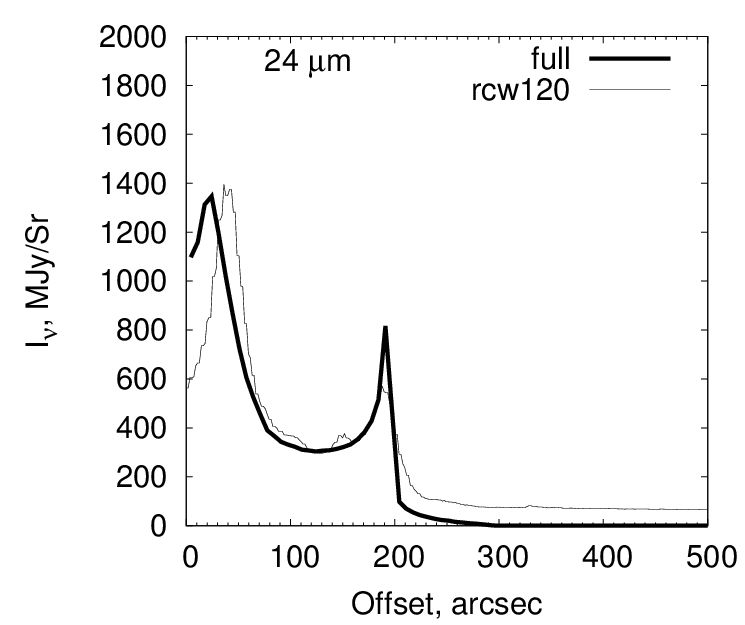| EPoS Contribution |
|
Organic dust in HII regions
Dmitri Wiebe INASAN, Moscow, RU | |
| We consider dust evolution during the pressure-driven expansion of an H II region around a single massive star using the chemo-dynamical model MARION. Dust size distribution is represented by several dust types, including polycyclic aromatic hydrocarbons (PAHs), very small grains (VSGs), big grains (BGs) and also intermediate-sized grains (ISGs), which are larger than VSGs and smaller than BGs. The dust is assumed to move at terminal velocity determined locally from the balance between the radiation pressure and gas drag. As Coulomb drag is an important contribution to the overall gas drag, we evaluate a grain charge evolution within the H II region for each dust type. Our goal is to find an explanation to the observed morphology of infrared bubbles with bright outer emission rings seen at 8 mum and at Herschel wavelengths and bright inner emission peaks and rings seen at mid-IR Spitzer and WISE bands. So far, we have shown that radiation pressure on dust effectively sweeps most dust particles from the center of the HII region and leads to the non-uniform dust distribution within the ionized region. Radiation transfer modelling shows that this distribution indeed causes the two ring morphology of the HII region on infrared emission maps. | |
 | |
| Caption: A theoretical radial intensity profile at 24 μm compared to the observed profile for the infrared bubble RCW120. | |
| Collaborators: Ya. Pavlyuchenkov, INASAN, RU M. Kirsanova, INASAN, RU V. Akimkin, INASAN, RU |
Key publication
Suggested Session: Massive Star Formation |

